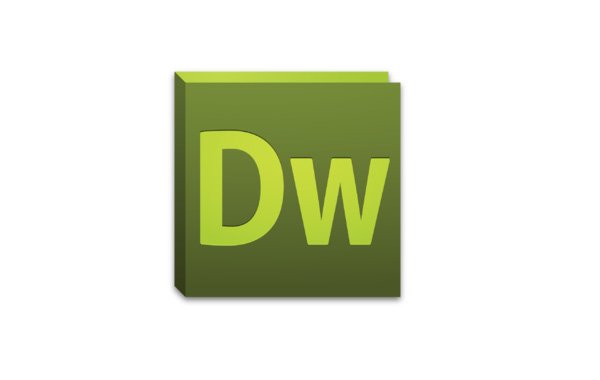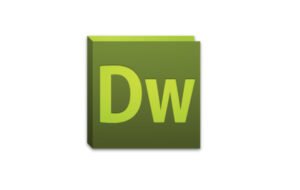
Dreamweaver
Adobe Dreamweaver is a powerful web development tool that enables users to design, code, and manage websites and web applications. Known for its flexibility and extensive features, Dreamweaver is widely used by web designers and developers to create responsive and visually appealing websites. This guide provides an overview of Adobe Dreamweaver, its features, installation process, and tips for getting the most out of the software.

Dreamweaver: The Ultimate Guide
Key Features
Visual and Code Editing:
- Design View: Allows users to design web pages visually without needing to write code. Ideal for beginners or those who prefer a WYSIWYG (What You See Is What You Get) interface.
- Code View: Provides a full-featured code editor with syntax highlighting, code hints, and error checking for advanced users who prefer to write code directly.
- Split View: Combines both Design and Code views, allowing users to see the visual representation of their code in real-time.
Responsive Design:
- Fluid Grid Layouts: Enables the creation of responsive designs that adapt to different screen sizes and devices. Use pre-built grid systems or customize your own layouts.
- Media Queries: Integrate media queries to apply different styles for different devices, ensuring a consistent user experience across desktops, tablets, and smartphones.
- Live Preview: View your design in real-time on multiple devices simultaneously. Dreamweaver’s Device Preview feature allows you to test your site on various screen sizes and resolutions.
Integrated Development Environment (IDE):
- Code Editor: Features a robust code editor with intelligent coding assistance, including code completion, syntax highlighting, and error detection.
- Emmet Support: Boosts productivity with Emmet, a toolkit that provides shorthand syntax for writing HTML and CSS code faster.
- Version Control: Integrates with Git to manage source code versioning, allowing users to track changes, revert to previous versions, and collaborate with team members.
Site Management:
- FTP/SFTP Support: Easily upload and download files to and from your web server using built-in FTP/SFTP functionality.
- Local and Remote Views: Manage files locally and remotely, ensuring your local development environment mirrors your live site.
- Site Synchronization: Synchronize your local and remote sites to keep them updated and consistent.
Frameworks and Templates:
- Bootstrap Integration: Seamlessly integrate Bootstrap, the popular front-end framework, to build responsive and mobile-first projects quickly.
- Starter Templates: Utilize a variety of starter templates for different types of websites, including blogs, e-commerce sites, portfolios, and more.
- Custom Templates: Create and save your own templates for reuse, streamlining the development process for similar projects.
Advanced Tools and Features:
- CSS Preprocessor Support: Work with CSS preprocessors like Sass, Less, and SCSS to write cleaner and more maintainable CSS code.
- JavaScript and jQuery: Write and debug JavaScript and jQuery directly within Dreamweaver, with built-in support for libraries and frameworks.
- APIs and Web Services: Connect to APIs and web services to integrate dynamic content and functionality into your websites.
Installation and Setup
Downloading Adobe Dreamweaver:
- Adobe Creative Cloud: Dreamweaver is part of Adobe Creative Cloud. Visit the Adobe website (adobe.com) and download Creative Cloud to get started. Sign in or create an Adobe account if you don’t have one.
Installation:
- Creative Cloud App: Open the Creative Cloud desktop app, find Dreamweaver in the list of available applications, and click “Install.”
- System Requirements: Ensure your computer meets the system requirements for Dreamweaver. These typically include a modern operating system (Windows or macOS), sufficient RAM, and available disk space.
Initial Setup:
- Workspace Configuration: Customize your workspace by arranging panels and toolbars to suit your workflow. Dreamweaver offers several workspace layouts tailored for different types of projects.
- Site Setup: Define a new site by specifying the local root folder and setting up the server connection (FTP/SFTP). This helps Dreamweaver manage files and synchronize changes between your local and remote sites.
Using Adobe Dreamweaver
Creating a New Project:
- New Document: Start a new HTML document from scratch or use one of the starter templates. Choose the appropriate document type and specify the desired framework (e.g., Bootstrap).
- Add Content: Use the Design view to drag and drop elements onto the page, or switch to Code view to write HTML and CSS directly. Utilize the Insert panel to add commonly used elements like images, forms, and tables.
Designing with CSS:
- CSS Designer: Use the CSS Designer panel to create and manage CSS styles. Apply styles to elements by selecting them in the Design view and adjusting properties in the CSS Designer.
- Media Queries: Add media queries to your CSS to create responsive designs. Use the Visual Media Queries bar to manage breakpoints and see how your design adapts to different screen sizes.
Using JavaScript and jQuery:
- Script Integration: Write JavaScript and jQuery code directly within Dreamweaver or link to external scripts. Use the Code view for scripting and the Console panel for debugging.
- Interactivity: Add interactivity to your web pages, such as animations, form validations, and dynamic content updates using JavaScript and jQuery.
Testing and Previewing:
- Live Preview: Use Live Preview to see your changes in real-time. This feature updates the preview automatically as you edit your code, providing immediate feedback.
- Device Preview: Test your site on multiple devices using the Device Preview feature. Connect your devices to Dreamweaver to see how your site looks and behaves on different screen sizes.
Publishing Your Site:
- FTP/SFTP Upload: Once your site is ready, use Dreamweaver’s FTP/SFTP functionality to upload your files to the web server. Ensure your site is correctly set up in Dreamweaver to manage the upload process smoothly.
- Site Synchronization: Keep your local and remote sites in sync by regularly using the synchronization feature. This ensures that all changes made locally are reflected on the live site.
Advanced Features
- Custom Workflows:
- Extensions and Plugins: Enhance Dreamweaver’s functionality with extensions and plugins available through the Adobe Exchange. These tools can add new features and streamline your workflow.
- Automation: Use Dreamweaver’s built-in automation tools to perform repetitive tasks more efficiently. For example, you can use the Find and Replace feature to update code across multiple files simultaneously.
- Accessibility and Standards:
- Accessibility Checks: Ensure your website meets accessibility standards by using Dreamweaver’s built-in accessibility checker. This tool helps you identify and fix issues that might affect users with disabilities.
- W3C Validation: Validate your HTML and CSS code against W3C standards to ensure compatibility and adherence to best practices.
- Collaboration:
- Git Integration: Collaborate with team members using Dreamweaver’s Git integration. Manage your source code, track changes, and resolve conflicts directly within the IDE.
- Creative Cloud Libraries: Share assets like images, colors, and text styles with your team using Creative Cloud Libraries. This ensures consistency and streamlines the design process.
Troubleshooting Common Issues
- Performance Issues:
- Optimize Settings: Adjust Dreamweaver’s performance settings to improve speed. Disable unnecessary features, such as code linting for large files, and increase the cache size.
- Update Software: Ensure you are using the latest version of Dreamweaver. Adobe regularly releases updates that include performance improvements and bug fixes.
- Compatibility Problems:
- Browser Testing: Test your website in multiple browsers to identify and resolve compatibility issues. Use browser developer tools to debug and fix problems.
- Code Validation: Regularly validate your code using Dreamweaver’s built-in validators or online tools to catch syntax errors and compatibility issues early.
- FTP/SFTP Issues:
- Server Configuration: Verify that your FTP/SFTP settings are correct and that you have the necessary permissions to upload files. Check your server logs for error messages.
- Firewall and Security: Ensure that your firewall or security software is not blocking Dreamweaver’s connection to the server. Add exceptions if necessary.
